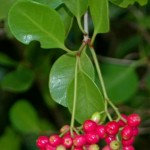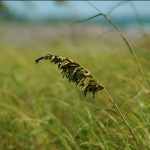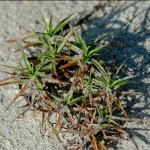What I learned in school today. Today’s field trips: Ocean Ridge Hammock Park in Boynton Beach and Lantana Nature Preserve in Lantana.
Hammocks
No, not the kind that you string between two trees. Although actually, that’s pretty close to perhaps the most compelling derivation of the word I’ve heard yet. According to Thomas E. Lodge (The Everglades Handbook: Understanding the Ecosystem), in Florida, a hammock is a “localized, mature hardwood forest.” That’s correct as far as it goes, but his derivation of the name is a bit too fanciful for our fearless leader. He prefers a simpler origin for the term, one that involves the first explorers of this coastline: sailors! According to this version, these coastal hardwood forests are called hammocks because they are the locations on the coast where there are enough trees available to sling a hammock conveniently between them. They’re also close to shore, with a nice sea breeze to keep the bugs down, and they’re shady–perfect for sleepin’!
Whether you agree with this folk etymology or not, tropical hardwood hammocks are fantastic places. Plants normally found nowhere outside the West Indies and Cuba thrive in them (gumbo-limbo, strangler fig, pigeon-plum, lancewood, paradise tree, poisonwood, mastic, wild lime, white stopper, marlberry, wild coffee, …). Once established, hammocks create their own moist microclimate, humid enough that they rarely burn.
Apparently if you really like tropical hardwood hammocks, you need to go to the part of Key Largo that’s north of US 1 (take Card Sound Road instead), and explore the botanical sites there. Bring your bike. However, that’s all the way down in the Keys (but a lot closer than Key West for anyone who wants to take me on a mini-vacation, hint hint).
One peculiarity about the hammocks where we live, is that this far north on the coast most of the plant species have fleshy berries, which implies that they are distributed mainly by birds carrying the seeds. Diversity of species is somewhat lower, and it’s possible to find more representatives from temperate climates (live oak, cabbage palm) instead of the heavy tropical representatives farther south (blolly, for example, or fiddlewood, which don’t occur indigenously north of the Keys).


For purposes of this class, though, a hammock is the vegetative community on top of the established dune on a barrier island, away from the high-energy zone of the beach, behind the foredune, behind the transition zone. So let’s head out from under the shade of the hammock and proceed toward the ocean:
In the transition zone, the low area between the primary dune and the foredune, lies a diverse array of plant species. They need the shelter of the foredune to keep them from being blown away by the wind or buried by the sand or burned by the salt spray of the beach area. Plants in this area include railroad vine, beach pea, erect dayflower, passiflora tuberosa, bay cedar, etc.
On the foredune itself there might be a few hardy vines (railroad vine), a few grasses (beach star, sea purslane), but the dominant plant would have to be sea oats (Uniola paniculata).

This grass is the primary dune builder; it traps the windblown sand that travels up the beach in the onshore breeze (via saltation), which causes accretion of sand, which causes the grass to grow higher, which allows more sand to build up, until eventually you have a dune. Similar processes occur with other species, like the Florida endangered plant, beachstar (Cyperus pedunculatus),

but sea oats are so much more widespread, and cover so much more area, that they do all the heavy lifting of dune-building.
Fun fact for the day: a strangler fig is a relative of the rubber tree; its sap is a latex that can get quite sticky. Apparently the Mayans would use rubber balls in a ceremonial game that was so intriguing, Columbus brought a team back to Ferdinand and Isabella to perform. And that was the first time Europeans had seen team sports!
Another species with identical genus and specific epithet: the Quahog clam, Mercenaria mercenaria.
Another fun fact for the day: Sea hares, a marine mollusk without a shell, have the largest neurons of all animals; they are used in neurological research.

Hello,
I am inquiring if I may use your photo of blolly (Guapira discolor)[at https://benkolstad.net/?p=361%5D in my book “Bush Medicine of the Bahamas: A Cross-Cultural Perspective from San Salvador Island, including Pharmacology and Oral Histories,” due to be published in August 2011. Additional information about the book can be found in the companion website at http://www.bushmedicine.org
I would of course give proper attribution, either embedding the copyright in the image according to how you would like it to appear, or in the caption underneath.
If so, it would be great to have a higher resolution image than the one on your website.
Thank you,
Jeff McCormack
~ ~ ~
Jeff McCormack, Ph.D.
Charlottesville, Virginia
* San Salvador Ethnobotany Project (www. bushmedicine.org
Hi, Jeff.
I’d be happy to have you use the photo, if it’s at all useful. As I look at it again, I’m afraid that it might be blurry and end up not helping you very much. But you’re welcome to use it, or, if you like, I can see if anyone in my native plant chapter might have a better one they’d be willing to let you use. Either way is fine with me. Email me at B e n a t k o l s t a d d o t c o m.
–Ben